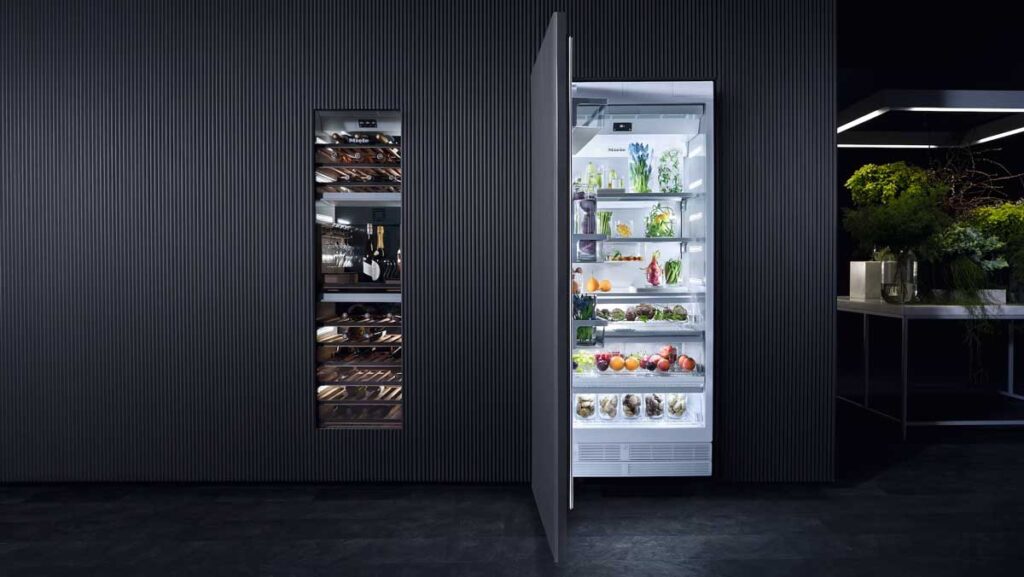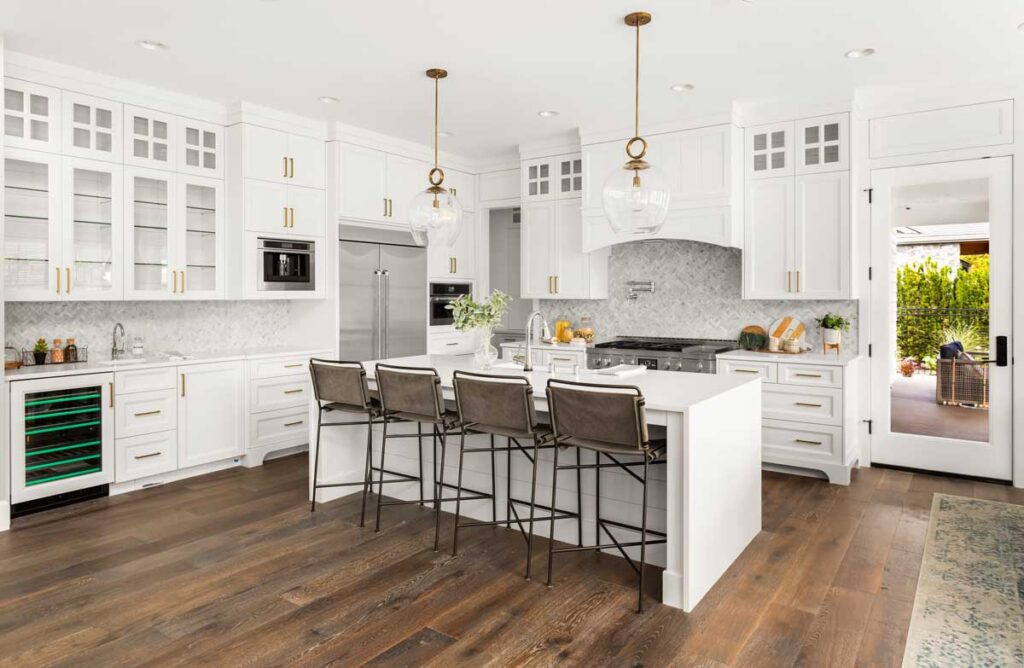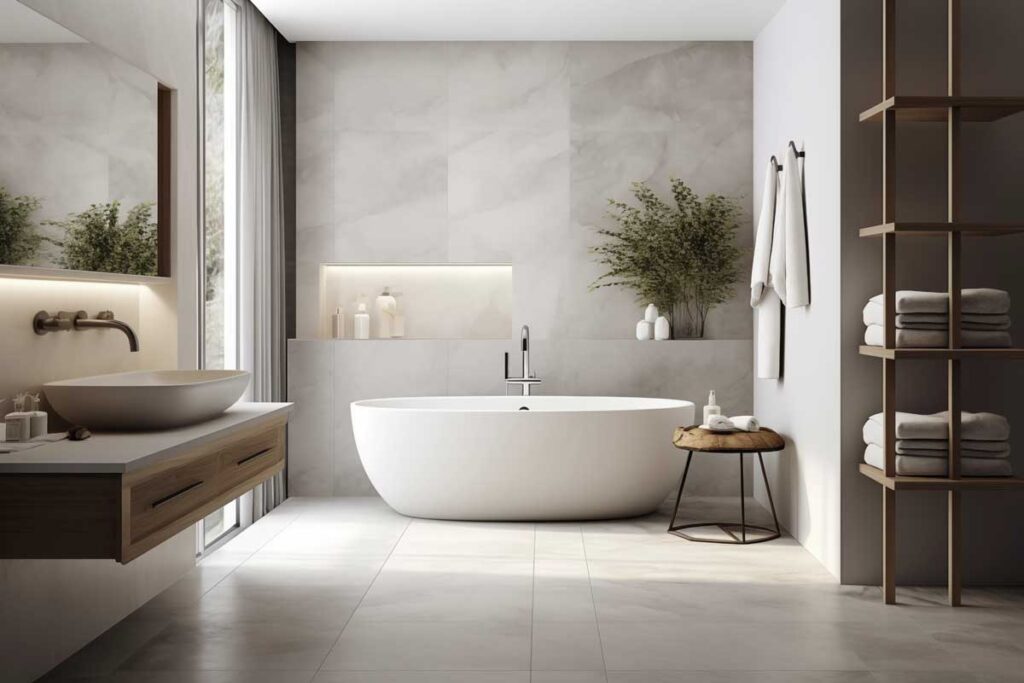Selecting certain materials and methods helps complete jobs more efficiently and quickly.

By Matt Lee
Supply-chain disruption and labor shortages have caused residential construction projects to drag, and often cost more in the process. Getting ahead of supply chain shortages requires planning and flexibility, so it’s important to be aware of the supplies that are most difficult to obtain and have multiple sourcing options at the ready.
NKBA Design Competition Now Open — Enter Today!
How can project managers get your jobs done quickly without waiting on the supply chain and labor to catch up to the demand? Below are five building practices and material options that may help to speed the construction process.
1. Simplify Layout and Design
Simple and minimalist designs require less planning and labor than elaborate and highly decorative spaces. Modern, minimalist design has become popular over the years, and might be an efficient, timing-saving option.
Choosing a simpler design and layout may also be an effective method of cutting costs if the client’s budget is being stretched due to increases in the price of supplies. Here are some other advantages of choosing a simple home layout and design style:
- Simple home layouts usually opt for an open concept, making the home feel larger and providing more usable and customizable space within the home. Open-concept kitchens are also great for entertaining at home — a big activity, during and after the pandemic.
- Different rooms can serve multiple purposes based on the family’s needs.
- Designs are practical and functional.
- Simple design gives the home a clean, uncluttered look, which contributes to a refreshing, relaxing atmosphere and stress relief.
2. Develop Options
Getting ahead of the supply chain shortage will require some planning and flexibility. Be aware of which supplies are difficult to obtain and have multiple suppliers at the ready. When one supplier is not able to provide a certain material, simply move on to the next until you can get what you need. Waiting on just one supplier will certainly slow down the building process.
Designers who typically work with global suppliers should keep some regional or local supplies in mind as well, and vice-versa. Flexibility is important: you should be able to adjust your building plans based on the materials available. Being picky and inflexible will most definitely increase the amount of time it takes to complete construction.
3. Speed Up “Last-Mile Delivery”
“Last-mile delivery” is a term that refers to the last step in the supply chain in which the product transfers to the customer, business or job site.
The goal of last-mile delivery is to get the product in the hands of the customer as quickly as possible, regardless of the product or industry. With rampant supply-chain shortages and delays, speeding up last-mile delivery is key to finishing a construction project faster.
As a customer, you can hasten the process by choosing companies and suppliers with optimized last-mile delivery services. This includes offering faster delivery time, order-tracking systems and allowing customers to set delivery times.
And, be sure to stay in close communication with the supplier so you don’t miss a shipment.
4. Opt for Pebble Shower Floors
Pebble shower floors are a great alternative to tile. They are easy to install, which speeds the building process and reduces the amount of labor required to complete the bathroom space.
While some might expect a pebble shower floor to feel bumpy or uncomfortable, they are preferred by many people. The pebbles are smooth and set into the floor for a comfortable feel. The texture of the pebbles also adds grip, which can prevent injuries due to slipping and falling.
There are a variety of pebble shower floor designs and colors available to complement any decor. They’re also a great detail, adding surface interest in simpler bathroom layouts and designs.
5. Choose Concrete Countertops
Concrete supply is one of the few areas where supply chain wasn’t greatly impacted, with only localized shortages being reported. Concrete countertops could be a great option for a kitchen or bathroom. Besides availability, here are a few other advantages of using concrete:
- Concrete countertops can be customized to the exact color and shape desired.
- Choosing concrete for your countertops doesn’t mean that they have to be gray (unless the design calls for a more industrial or modern style). It’s even possible to mimic the look of granite or marble countertops using concrete for a much more affordable price point.
- If a client was hoping for wooden countertops but is discouraged by lumber shortages and price increases, concrete can even mimic the look of wood.
- Concrete countertops are very durable and are often reinforced with glass fibers in the mix, which makes cracking or damage highly unlikely.
An important disadvantage to note is that concrete countertops are susceptible to stains. So, homeowners will need to reapply wax or sealer regularly and clean up spills immediately to avoid damage.
Quicker Construction is Possible
If you are in the middle of a construction project, just remember that completing the project on time requires flexibility, adapting to rapidly changing situations, and getting creative with design.
Matt Lee is the owner of the Innovative Building Materials blog and a content writer for the building materials industry. He is focused on helping fellow homeowners, contractors, and architects discover materials and methods of construction that save money, improve energy efficiency, and increase property value. Lee has written for NKBA on using innovative materials and techniques trim costs.






















